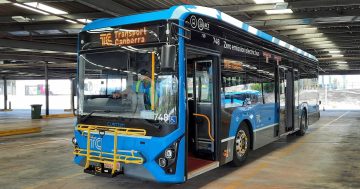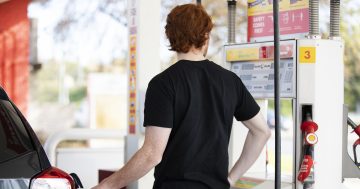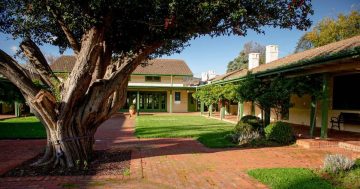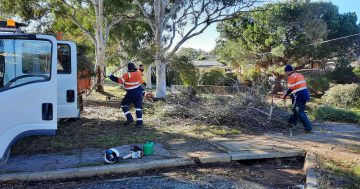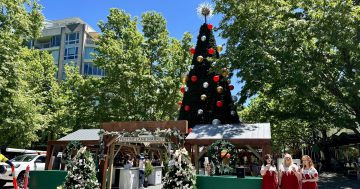
Mission accomplished?: Business and Better Regulation Minister Tara Cheyne visited the Artists’ Shed at Fyshwick to launch the ChooseCBR scheme. Photo: Tara Cheyne MLA Facebook.
Business Minister Tara Cheyne may have been trying to be open and transparent about the ChooseCBR voucher scheme, but she showed considerable chutzpah in releasing a list of the top 100 businesses who used it.
She may live to regret that decision, after at first saying it could not be done, and possibly even rolling out the business stimulus measure in the first place given its faltering history, technical glitches and dubious benefits.
The Top 100 raised even more questions and the Canberra Liberals, hardly an anti-business bunch, will continue to prosecute the case for a full audit of the scheme, which dumped a bucket of free money into a minority of Canberra enterprises in a 25-hour spree.
Government figures revealed that 19 businesses redeemed more than 500 vouchers each and 133 businesses redeemed more than 100 vouchers each before the $2 million scheme ended.
Almost 40 per cent of the vouchers were claimed at stores like grocers, with Daily Market City & Gungahlin topping the list, receiving 3.3 per cent of all vouchers redeemed.
Stores like that dominated the top 10, and that in itself is a pattern worth investigating.
Perhaps those business and their customers were simply better organised, but it does raise the question of whether the scheme was gamed, and not as the Minister put it as “a testament to the enthusiasm of local businesses who embraced the scheme, marketed it, and encouraged old and new customers to come in and spend”.
It would also be interesting to know how many workers were actually employed or if family members staffed these businesses.
Only one in four were redeemed at cafes, restaurants and takeaway shops, which you would have thought would have been the target businesses for the scheme.
National chain Chemist Warehouse at Belconnen Markets came in at number 3. Does that sound like a small Canberra business in need of a lift?
Almost 800 businesses, or one in five that were eligible, took part in the voucher scheme, but 180 of them got less than $50 out of it.
The speed at which the $2 million pot emptied also sounds alarm bells.
To redeem 500 vouchers, a business would have had to redeem one voucher every three minutes for the entire 25 hours the scheme ran since it restarted at 7:00 am on Friday 18 June after a seven-day pause forced by technical issues.
All up, about 59,000 vouchers were redeemed over the scheme’s short life.
Ms Cheyne says there had been no reports of the scheme being misused but conceded that it might not be possible to determine whether some customers had exploited the scheme by signing up twice.
She says the vouchers resulted in more than $5.1 million being spent at businesses across Canberra, but even if you accept that Canberra businesses were that hard up to need such a boost and the possible repeat trade it may bring, the rules, structure and administration of the scheme leave a lot to be desired.
The spending orgy it encouraged, its first-come-first-served nature, and the sugar rush that was sweetest for some at the expense of others surely begs further inquiry.
Ms Cheyne may continue to claim it was a resounding success but throwing a fistful of dollars up in the air is not a considered and well thought through stimulus measure.













